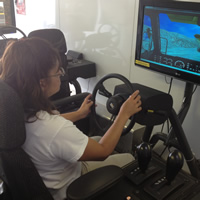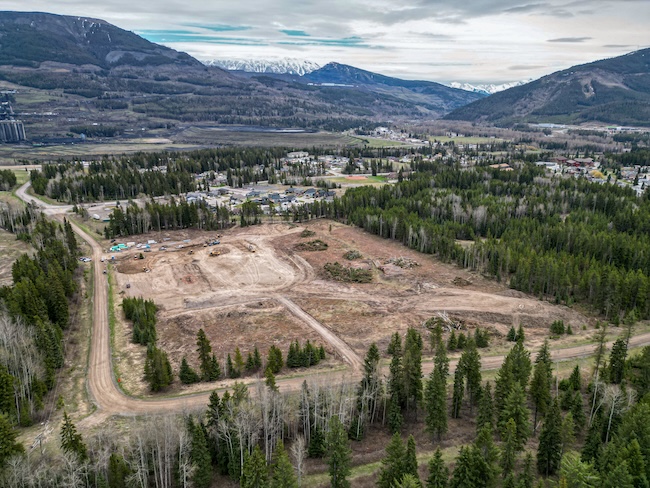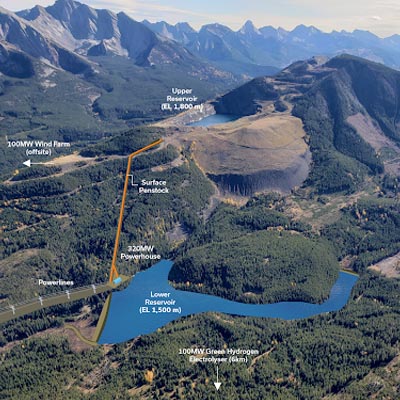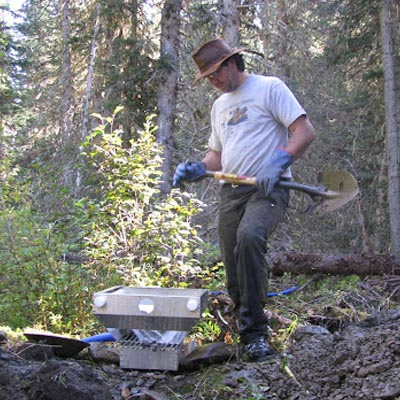Benefits for industry and communities

1 of 2BC AMTA candidate Kim Halvorson operates an HEO mobile simulator as part of her training. — Photo courtesy Robin Mann2 of 2Recent graduates from
1 of 2BC AMTA candidate Kim Halvorson operates an HEO mobile simulator as part of her training. — Photo courtesy Robin Mann
As of July 9, 2013, the British Columbia Aboriginal Mine Training Association (BC AMTA) had helped place 561 individuals in mining positions throughout the province. The following day, eight candidates joined the ranks of those who have graduated with industry-specific training through this non-profit organization. The heavy-equipment operators program has prepared the group with four weeks of classroom theory in Cranbrook, B.C., and a further four weeks of hands-on equipment training in Kamloops, B.C.
“We try to support individuals in whatever their interests or passions are, to get them to be successful and happy in their long-term employment goals,” said Robin Mann, the BC AMTA's program co-ordinator in the Kootenay region. “That could be anything related to mining. We’re a mining organization, but it’s a very vast sector of employment that can be anything from office admin work all the way to haul-truck driver, electrician or welder.”
The BC AMTA was founded to help address a looming labour shortage in the mining industry. First Nations communities are often located near mine sites, and this win-win arrangement also helps these communities develop economic health.
The staff at the BC AMTA build a relationship with each candidate along his or her journey to employment. It’s about more than simply providing training; the BC AMTA offers support from beginning to end, often continuing to stay in touch with candidates once they’ve successfully found a position in the workforce. Every candidate works with a program coach on personal development as well as career development.
“Focusing on the people and partnerships makes us successful,” said Michelle Nahanee, marketing and communications manager for the BC AMTA. “It takes people to build trust and move forward into a new, healthy economy and it takes people to run an efficient and safe business. Knowing this basic starting place is a key success factor for BC AMTA. We try to understand the motivations, the uncertainties, the assumptions and the culture of both the community and the business, and (we) always start from a place of listening.”
Every BC AMTA candidate first has an appointment with a program manager such as Mann. They write a Test of Workplace and Essential Skills assessment to match them with the program they’re best suited to. From there, they are placed in one of three training tiers—in essential skills, occupational or certified trades—working closely with instructors and a program coach. The BC AMTA operates with contributions from the federal government, the mining industry and First Nations. The quality training benefits the candidates, the economy and the industry by providing skilled workers who tend to see significant gains in income through their employment.
“They really put 110 per cent into themselves as well as into the training that we support them through,” said Mann. “Then that gives them the experience and the training and the credentials to be able to move on to that next step of going through the interview process and into employment.”
Thanks to the commitment and motivation of eight recently graduated candidates from the Kootenay region, the BC AMTA will have a few more success stories. Mining and Exploration wishes the candidates and the organization all the best moving forward.




